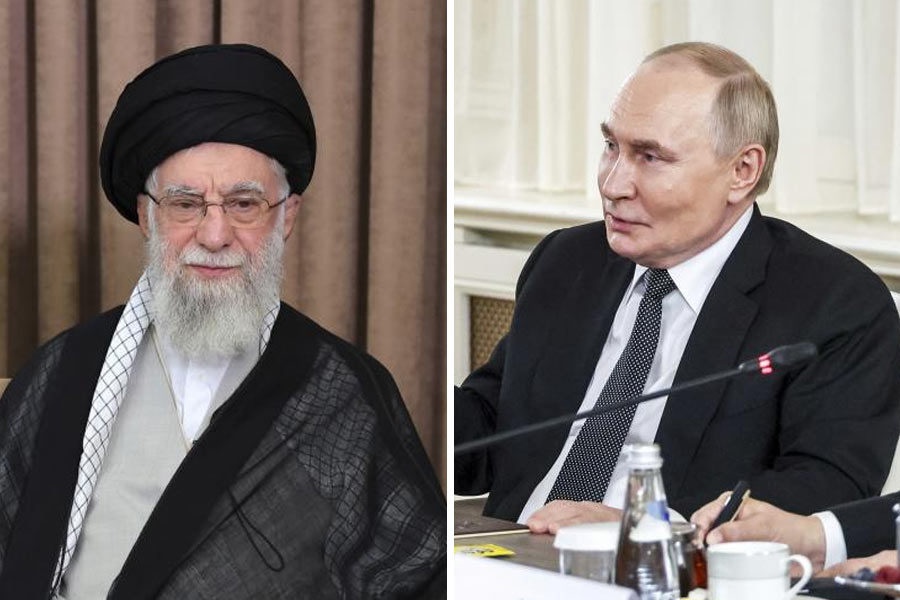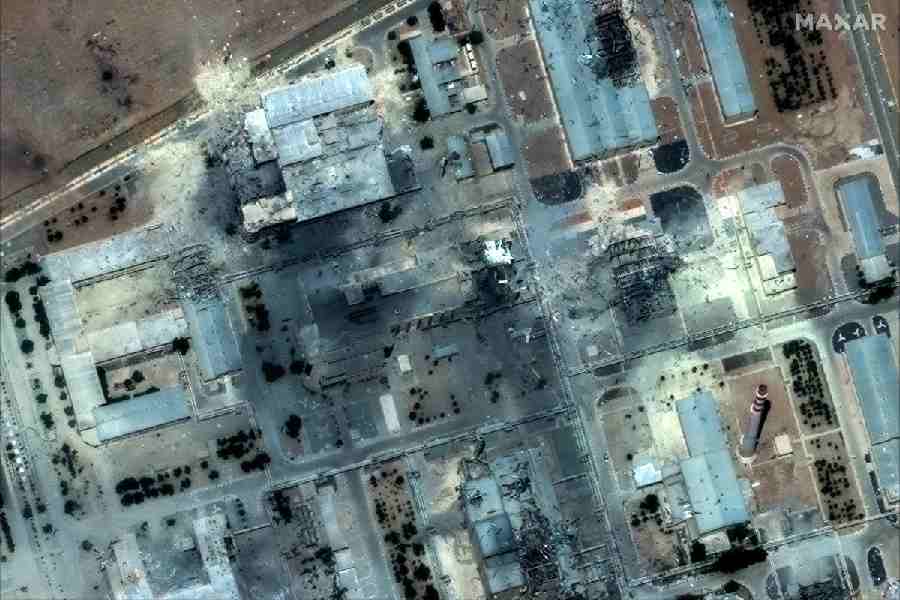|
|
The present crisis in Tibet is reminiscent of those that have beset empires in the near and distant past. The Ottoman and Austro-Hungarian dominions were gravely weakened by a variety of ethnic discontents, none of which could be accommodated in an imperial state in distress. The deeper the struggle, the greater was the repression from the centre. These, in time, meshed with the killing fields of World War I. The recourse to force at the first hint of trouble is surely a sign of insecurity. By shooting down unarmed civilians in Jallianwala Bagh in 1919, General Dyer believed he had rescued the British empire in India from possible extinction. As in Amritsar, so in Lhasa.
Whither Communist China? The atavistic hubris of the country’s rulers has blinded them to the perils of applying indiscriminate force in the face of political and social unrest. Chairman Mao had once spoken hopefully of solving what he called non-antagonistic contradictions within the polity without resorting to draconian measures. Yet force was perceived and extolled as integral to revolutionary socialist theory and practice, the holy grail that would lead to the fulfilment of the classless nirvana of Maoist prophecy.
State violence, it was said, had myriad forms of which class struggle was one, but its tensions and conflicts embraced China’s majority Han population and its relationships with the minority Tibetans, Mongolians (both Buddhist), and the Turkic Uighurs, who are Muslim and stand out from the Hans through their separate tongues, cultures, ethnicities and religions. Absorbed into the empire in one of its great periods of territorial expansion under the non-Han Qing dynasty (1662 -1912), they became the Achilles heel of the Celestial Empire. The Qings and the earlier Yuans (Mongols 1280-1368) were Central Asians who ascended the Dragon Throne through conquest. Both dynasties were drawn into religious-cultural ties with the Dalai Lamas, pontiffs of their common Mahayana Buddhist faith.
Such acquisitions became staple of Han nationalism and statecraft and the accompanying irredentism. At the core of this Weltanschauung was China’s tributary system, which required tribute-bearing rulers to kowtow to the Son of Heaven. The Middle Kingdom complex permeates Han psychology. The disdain with which non-Han minorities and ‘foreign barbarians’ were viewed by the Imperial court was seeded in the country’s primordial past.
Shielded from the outside world, the Qing emperor had little knowledge or appreciation of international developments, as his dismissal of Britain’s Macartney Mission in 1793 clearly showed. The envoy’s gifts were loftily returned and the request to exchange embassies was curtly refused. Chien Lung’s letter to his counterpart, George III, addressed the British monarch as if he were a tributary supplicant. Macartney, however, represented a nation and a continent in the throes of the Industrial Revolution; and he was quick to see through the absurd pretence.
Such was the unfolding canvas against which was registered China’s subsidence. The Western intrusion into the Orient presented a set of social, political and intellectual challenges, which eventually overwhelmed the imperial court and its static Confucian bureaucracy, “educated upon a system which has not varied for ages….discharging the ceremonial duties of office with a mechanical and servile accuracy….but arrogant with a pride beyond human conception,” as the proconsul, George Nathaniel Curzon, commented.
Military defeat and political humiliation provided the texture of modern Chinese nationalism and its latter-day Communist mutation. Tibet was lost to the empire in all but name by the end of the 19th century. The Amban, Beijing’s Imperial Resident in Lhasa, was reduced to a solemn phantom as the 13th Dalai Lama asserted his authority and worked to rid Tibet of the last vestiges of the Chinese yoke. This occurred in the wider context of the British presence in India and the Great Game between the contending empires of Britain and Tsarist Russia in the Asian heartland.
Japan and the United States of America, not to speak of France and Germany, exerted a growing influence in the region. The Americans, keen to protect their commercial interests, enunciated the open-door policy on China and extended the definition of the country’s territorial integrity to its imperial frontiers, a decision fraught with the cruellest irony.
Britain’s Younghusband expeditionary force to Lhasa in 1903-1904 was designed to thwart Tsarist designs, but its principal effect was to weaken Tibetan defences against Han expansionism. The Anglo-Russian Convention of August 31, 1907, permitted the recrudescence of Han power in Tibet, the denouement being the march into Lhasa, in February 1910, by Chao Erh-feng’s legions and the flight of the Dalai Lama to India.
From the Morning Post in London came this sombre reflection: “a great empire, the future military strength no man can foresee, has suddenly appeared on the North-East Frontier of India…The Strategic Line has been lost, and a heavy price may be exacted for the mistake. China, in a word, has come to the gates of India, and the fact has to be reckoned with”.
The Simla Convention and the McMahon Line in July 1914 demarcated the borders between Tibet and India and agreed the status of Tibet after a fashion, but the talks left behind much unfinished business. Its Tibetan settlement was modelled on that carried out by Russia in Mongolia, but without the guarantee of Russia’s force majeure. What the Tsars started the Bolsheviks continued and Stalin completed in 1945, when he pressured Chiang Kai-shek’s government to concede full recognition of Mongolian sovereignty.
China’s Communist revolution saw a revival of the country’s imperial agenda, to which Chiang Kai-shek had also been firmly committed during his time in office. His book, China’s Destiny, listed China’s lost territories, which included Tibet, Mongolia, Nepal, Sikkim, Bhutan, Burma and Vietnam. Some of Mao’s early writings were written in a similar vein.
Among the first things he did on taking power in Beijing was the invasion of Tibet. His Han cadre was as cavalier in its dealings with the Tibetan subjects as Chao Erh-feng’s soldiery were in 1910, when they looted Tibetan monasteries and used their priceless Buddhist scrolls as padding for their boots.
The present 14th Dalai Lama fled his country in March 1959 for the sanctuary of India. Han immigrants flooded Tibet, as they have Mongolia and Xianjiang. Once a haven of peace, Tibet today is a vast military base.
India’s troubled relationship with its northern neighbour has ranged from trust to mistrust, outright hostility and conflict. Relations are now correct rather than cordial. China’s relations with its principal neighbours — Russia, Japan, India and Vietnam — have waxed and waned. Revealingly, only its ties with Pakistan have remained consistently close.
Tibet’s strategic location must remain a paramount Indian interest. The Chinese people, Han and non-Han, have to find their true, unfettered voice. The world must hear their octaves and trebles as they emerge from the glacial silence of their totalitarian enforcers. Only then will China succeed in redefining her role in the democratic comity of nations without bound feet and a false sense of face. A free association with Tibet will exorcise the Sino-Indian relationship of its demons. But this will be far from easy.
The historian, W.F. Jenner, writes, “The state, people and culture known in English as China are in a profound general crisis that goes deeper than the problems of a moribund communist dictatorship. …The very future of China as a unitary state is in question…The tradition of Chinese high culture that once led the world has long been in terminal decline. What ties all aspects of the crisis together is the past: what has happened in the past and the past perceived. Today’s objective problems, like the subjective ones that make their solution even more difficult than they would be otherwise, were created under two thousand years of bureaucratic absolutism. The history of tyranny is matched by the tyranny of history: perceptions and thought patterns from the past bind living minds.”











